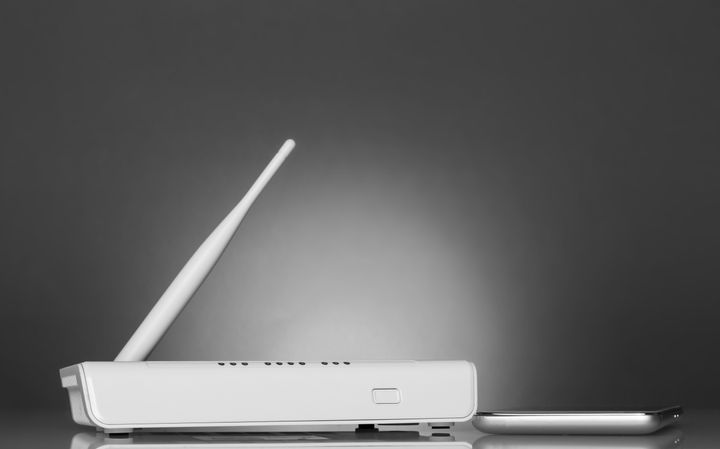More than a quarter of homes in the UK don’t have enough broadband speed to fulfil a typical family’s internet needs – such as downloading films or watching a series on Netflix (obviously).
These households (26%) are getting by on less than 10Mbps – which is the level Ofcom says is the “bare minimum” for a modern household, according to a new report.
Residents of Greenmeadows Park in Bamfurlong, Gloucestershire, have the slowest broadband in the country, with an average of just 0.14Mbps. People who live is Abdon Avenue in Birmingham, meanwhile, have the fastest broadband at more than 265Mbps.
That means it’ll take Gloucestershire residents two hours to download an average-length TV show on Netflix – versus just four minutes for people downloading the same show in Birmingham. So a pretty big difference.

Dani Warner, broadband expert for uSwitch, who conducted the annual survey, says that when it comes to people getting faster download speeds, the biggest hurdle is that people are unaware their internet could be faster.
But what can you do if your broadband is terrible? Can you speed it up by turning it on and off again? Or is it just a matter of geography?
Edd Dawson, CEO of Broadband, a consumer support group helping people to find the best broadband, explains: “If your provider’s technical support team is telling you that your line’s fine and everything’s working as expected, you may need to do some homework.”
The first thing you should do is check your speed, says Dawson, and see if it matches the speed you were promised by your provider. A speed test tool – like this one – will show your download speed, upload speed and what’s called a ping result. The lower the number for the ping result, the more responsive your connection is.
Quick Fixes
1. Turn It Off And On Again
Yes, this is the cliché answer for any IT problem, but there’s a reason for that: sometimes it works. If your broadband is generally okay but seems to have slowed down this once, it might be worth seeing if a reboot solves it.
“It’s best to switch off the power and leave it for 30 to 60 seconds,” advises Dawson. “When you power the router back on, your router will re-sync with your
telephone exchange and can potentially improve your connection speed.”
2. Try Moving Your Router
If you’re having regular problems, try moving your router before investing in any bigger solutions – its location will have some bearing on the speed.
Dawson advises placing your wireless router as high up as possible, such as on a table or shelf; keep it as centrally located in your property as you are able. “Don’t place it on the floor under a desk, and keep it away from power sockets and other wireless devices,” he adds.
3. Change The Channel
A common cause of wireless interference – which can slow your broadband down – comes from other networks nearby (i.e. your neighbours watching endless series on Netflix). The more networks in range, the more interference is likely.
Most people don’t change from the default channel on their router – Dawson recommends trying channel one (your individual manual will tell you how to do this) as this is usually not used as a default, giving you more of a monopoly.

Longer-Term Solutions
1. Avoid Telephone Extension Cables
Still no luck with the simple solutions? You might need to take it up a level. Start looking at other connections you have to your broadband. Anything that causes interference on your phone line is going to be affecting your broadband too – the worst offender being the telephone extension cable.
Always plug your router into the master phone socket, advises Dawson, as this will ensure you get the best possible connection.
2. Look At Microfilters
It might seem like a faff but make sure every telephone in your house is fitted with a microfilter – a device that allows broadband to work at the same time as your phone service. These devices might seem small but they can prevent mighty levels of interference.
A faulty microfilter can cause big problems with your broadband connection, says Dawson, so if you suspect you have a faulty microfilter then unplug all the
telephones and their microfilters in your house, and see if your broadband connection improves.
3. Try Installing A BT Accelerator
A BT Accelerator, also known as an iPlate, is a device that fits onto your BT master socket (at the wall where the phone port is) and eliminates electrical interference caused by your internal phone wiring.
It can apparently improve speed by up to 1.5Mb per second after fitting, and is worth investigating regardless of who provides your broadband.
4. Change Your Router
If you’ve had your current router for more than a couple of years, Dawson says it might be worth upgrading to a new model. Newer routers are better designed for getting the maximum range and power out of your wireless network and many are “dual-band” which is less likely to suffer from congestion.
5. Consider Changing Provider
“Not all broadband providers are equal, and it may be that your broadband speeds are slow because of a poor quality of service from your current provider,” says Dawson.
The government has promised all homes and businesses will have a legal right to demand access to services offering speeds of at least 10Mbps by 2020. Broadband providers will face a legal requirement to provide this minimum standard to anyone requesting it, subject to a cost threshold.